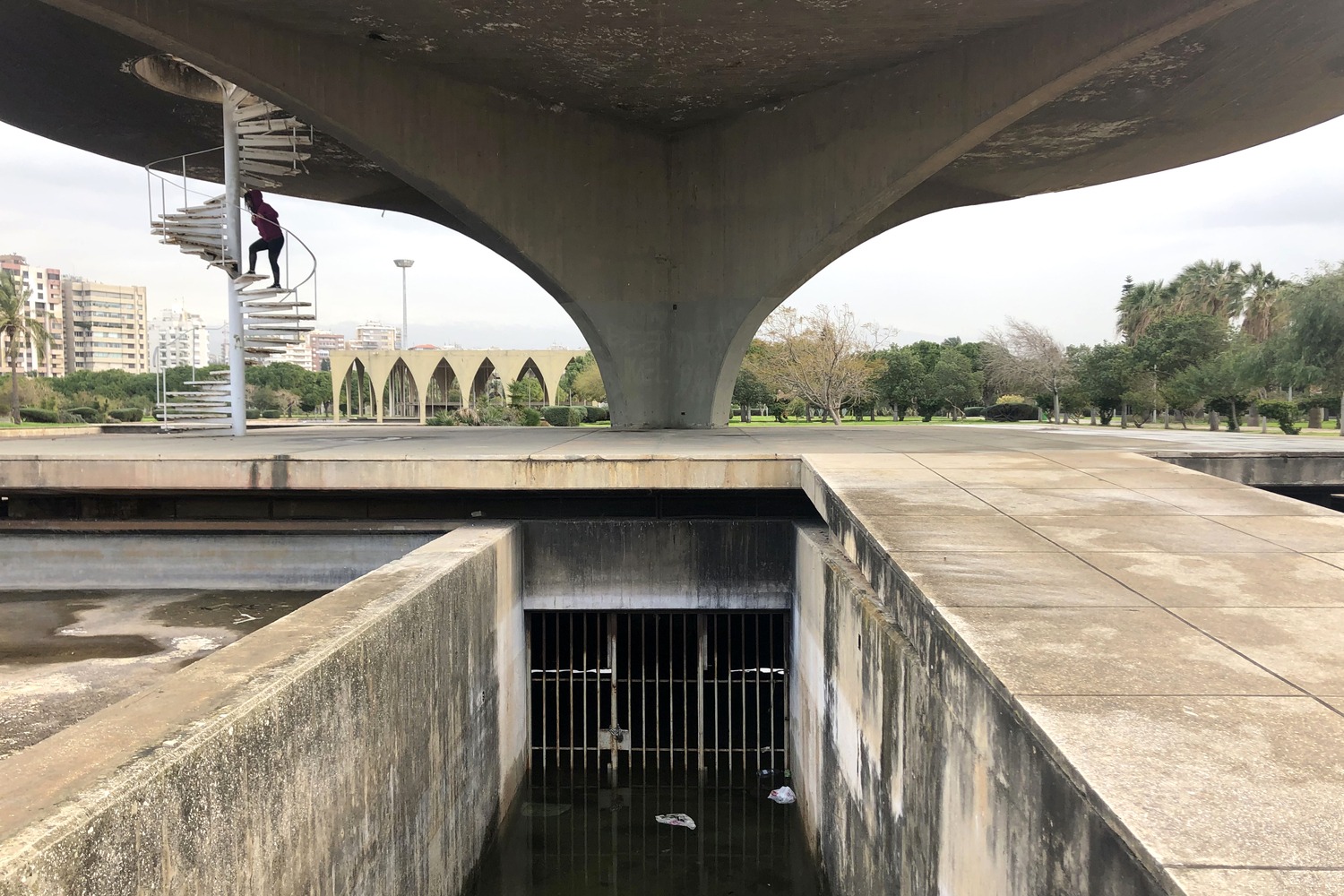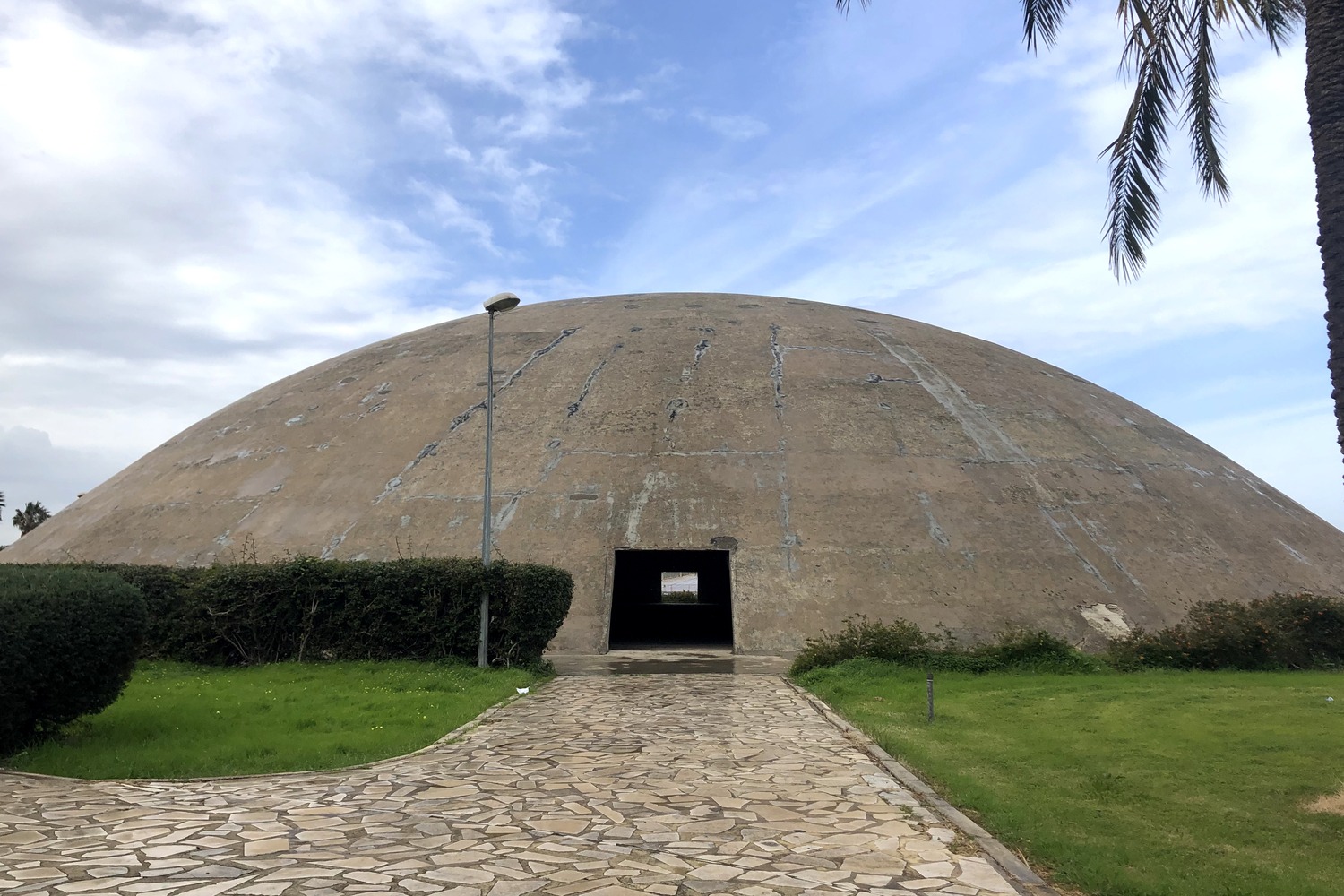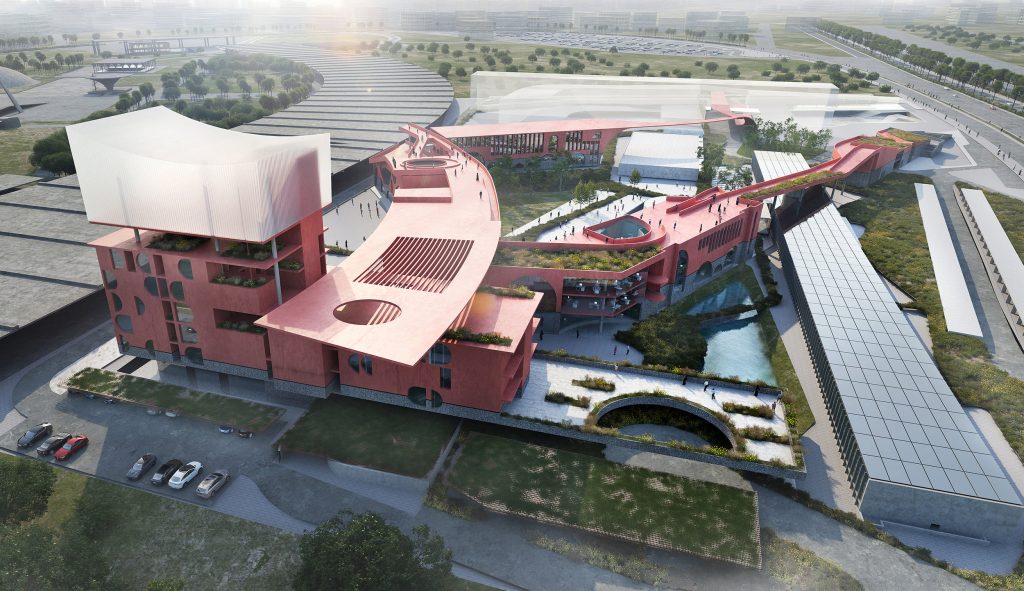Earlier this year, the Rachid Karami International Fair was placed on the World Heritage Danger List. We asked architect Etienne Bastormaji to explain the significance of this remarkable site in Tripoli and why its preservation is critical.

Photo – Dima Stouhi
The Rachid Karami International Fair was inscribed on UNESCO’s World Heritage in January 2023 for good reason. This long-awaited move affirmed its need for conservation.
Whether it’s due to neglect, the civil war or even lack of funds, unfinished projects and abandoned structures are at the core of Lebanon’s landscape.
The Rachid Karami pavilion was designed in 1962 by the renowned Brazilian architect Oscar Niemeyer. Having completed a masterpiece in Brasilia, Niemeyer took on the project to design the international fair as a world trade exhibition space, one that would be able to compete regionally and make Tripoli Lebanon’s second pole. Indeed, the port city was known for being a historic trading and manufacturing center and would allow for a decentralization from Beirut. Rumor has it that Niemeyer was flown in a helicopter over the city to decide on the exact location of the fair. Despite work commencing, the project was never completed due to the outbreak of war.

Photo – Dima Stouhi
Today, the unfinished landmark is a testament to the modern era in which Lebanon was a pioneer in the region through the development of such masterplans. The oval-shaped site comprises over 15 concrete structures that create state-of-the-art volumes that have dominated the cultural landscape of the design and architecture community’s interests.
In an effort to revive the site, many projects were initiated. Some of the initiatives included the Minjara project, which focused on local craft of wood making, taking one of the site’s renovated pavilions that recently won the Aga Khan award by East Architecture; and a competition to develop a mixed-use structure around the site in an effort to populate the complex’s surroundings.

Hatch & Etienne Bastormaji design
A number of ideas were put forward for the site’s development. Among these were design proposals by Marwan Basmaji, a collaboration between Hatch architects and Studio Etienne Bastormagi, as well as a proposal by Paul Kaloustian.
The announcement by UNESCO included two other endangered sites, namely the city center of Odesa as well as the Landmarks of the Ancient Kingdom of Saba, Marib, in Yemen.
Loading
